Most M.2 NVMe SSDs are sold without any heatsink. Popular SSDs such as Samsung 980 Pro, WD Black SN850, and MP600 come with dedicated heatsink options but you can also choose to buy their heatsink variants if you want.
But, in this article, we are going to talk about whether you really need a heatsink with your SSD or not.
Manufacturers themselves know whether their SSD will reach a frying temperature or not. Basically, the controller on your SSD is prone to excessive heat and then failures when put under pressure for longer periods of time. NAND Flash chips are supposed to get heated but they are much more durable than the controllers.
Another thing I want to highlight here is that the M.2 SATA SSDs will hardly need any heatsink because they are not made to do heavy read/ write operations like the M.2 NVMe SSDs. So, in this article, we will be talking only about the M.2 NVMe SSDs.
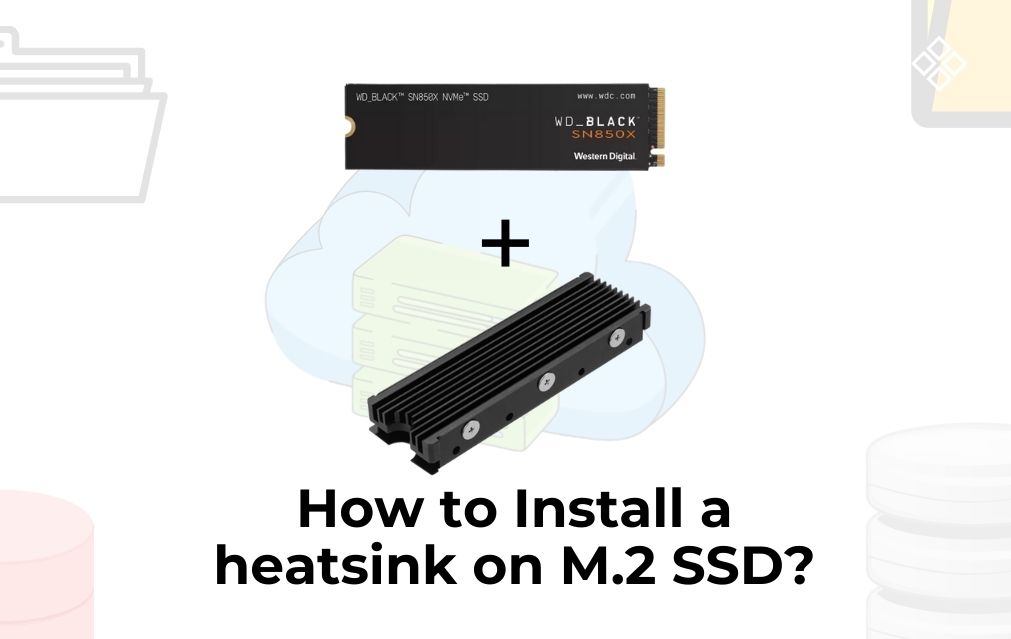
Does your NVMe need a heatsink?
There is no definitive answer to the question. The answer is going to be subjective. But, here are some things you can do to know whether your NVMe actually needs a heatsink or not.
1. Check the Manufacturer’s Guidelines
First and foremost, refer to the documentation or website of your SSD’s manufacturer. Many manufacturers provide clear guidelines on whether a heatsink is needed for optimal performance. One key thing to see if whether your drive has a heatsink version or not. If yes, it is good to go for it.
2. Monitor SSD Temperatures
Utilize software tools to monitor the operating temperatures of your SSD. Tools like HWMonitor or CrystalDiskInfo can help you keep an eye on the temperatures. If you notice temperatures consistently rising above 70°C, it might be a good idea to consider adding a heatsink.
3. Consider Your Workload
If you are using your SSD for high-intensity tasks such as gaming, video editing, or 3D rendering, the drive is likely to get hotter. In such cases, a heatsink can be beneficial to dissipate heat more effectively and maintain optimal performance.
4. Existing Cooling Solutions
Evaluate the existing cooling solutions in your system. If your system already has efficient airflow and cooling mechanisms in place, adding a heatsink might not be necessary. However, in compact systems with limited airflow, a heatsink can be a valuable addition.
5. SSD Placement
Consider the placement of your SSD in your system. If it is placed near components that generate a lot of heat, such as a GPU, it might be more prone to overheating, making a heatsink a wise choice.
If you think your SSD is under threat of these issues and can be heated to death, you should definitely go for a heatsink.
Can an M.2 NVMe SSD reach the frying temperature?
Most high-end Gen 4 NVMe SSDs have an operating temperature of 0-70°C. Samsung 980 Pro and WD Black SN850 are good examples to look at.
But, a Gen 4 SSD can go above this range and still work perfectly. In my opinion, NVMe heating issues are overhyped. An SSD can fail due to excessive heat in two cases.
- When you use your SSD on 90-100% for a longer period of time i.e. 4-5 Hours or more.
- When other components such as graphics cards throw external hot air on your SSD.
Does SSDs throttle?
If your SSD goes beyond the maximum temperature range i.e. near 70 – 80°C, the first reaction will be throttling. Your SSD will reduce its speed by itself and hence try to reduce the heat. But, in some cases, some components might fail to handle this heat and that is why the companies set this maximum limit.
Who should install a heatsink on an M.2 Drive?
Enthusiasts, Overclockers, Video Editors, Data Scientists, and all other people who have built powerful systems for their work using powerful M.2 SSDs should have a heatsink on their M.2 SSDs.
Especially people whose work depends mostly on data read/write operations for long durations.
Why you should have a heatsink on your SSD?
Heatsinks are not compulsory. SSD failures because of heat are uncommon. In fact, the branding labels on most SSD’s PCBs are designed to work as a heatsink. Samsung 980 Pro’s label also works as a heat spreader.
But, if you have a heatsink either the one coming with the motherboard or one bought from a third party, it will not only protect your SSD from failures but also increase its lifespan.
It is a fact that the SSD controller when exposed to excessive heat for longer periods tends to fail faster. But, this is the case only with the high-end Gen 4 NVMe SSDs. As we discussed earlier, the manufacturers will offer those SSDs in heatsink variants as well.
In simple words, it is always a win-win when you install a heatsink on your M.2 SSD especially the Gen 4 NVMe SSDs. Look at Paul’s Hardware video on the same topic.
How to install a new heatsink on your M.2 Drive?
So, you have decided to install an external heatsink on your NVMe drive. Well, keep these two things in mind before you proceed further.
- Removing the SSD’s label will probably void the warranty.
- If your motherboard already has a heatsink, there is no need to buy an external heatsink.
Now, let’s get started with the installation. You can use the same SSD on your PS5 as well.
1. Buy a good heatsink
I have selected an affordable yet well-trusted heatsink for this purpose. It is MHQJRH M.2 2280 SSD heatsink. It comes with a screwdriver and 3-Thermal Pads. So, you basically need nothing extra for this installation.
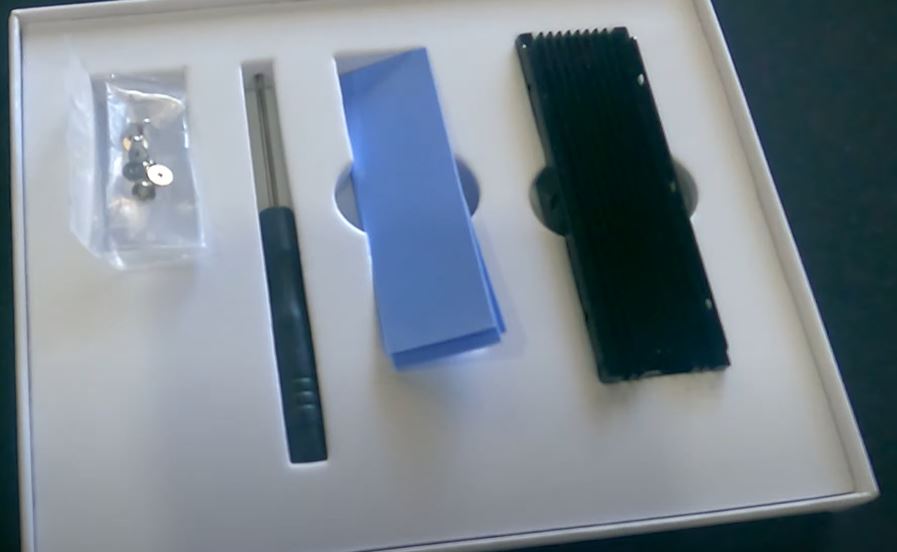
2. Apply the 1st Thermal Pad
Take the bottom/base of the heatsink and apply a thermal pad. Make sure to peel the thin plastic film so that it sticks properly.

3. Place the SSD and apply the 2nd Thermal Pad
On top of the thermal pad, you will place your SSD. Make sure to align the notch on the heatsink with the screw-place of your M.2 SSD. On top of the SSD, apply the second thermal pad.
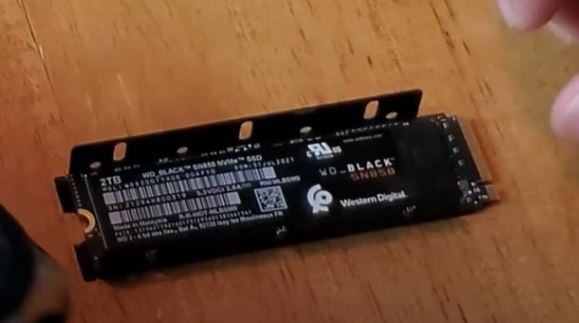
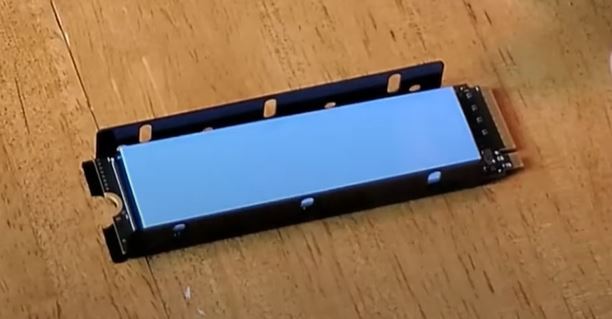
3. Install the heatsink properly and tighten the screws
Now, it’s time to place the heatsink over our SSD and tighten the given screws.
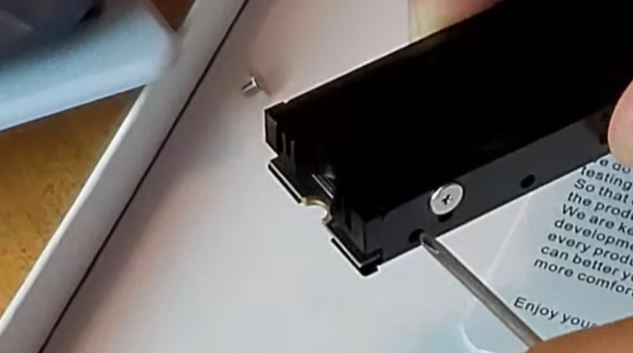
What kind of results you can expect with a heatsink?
These are the temperature levels of WD Black SN850 with and without a heatsink.
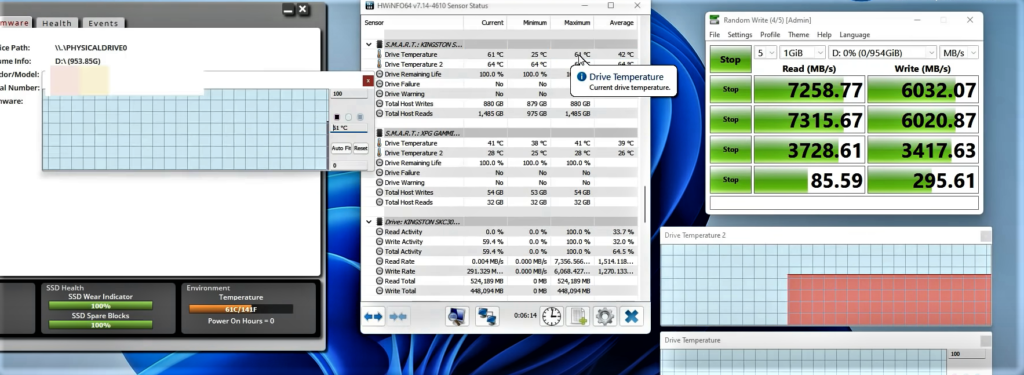

When I tried running the CrystalDiskMark on my SSD without any heatsink, the highest temperature reached around 68°C. But, with the heatsink, there was a drastic change in the highest temperature i.e. 43°C.
Can you install a heastink on your laptop’s M.2 SSD?
Any laptop will not have enough space to fit the heatsink inside. But, you can surely use an SSD with an external heatsink on a PS5.
Let me know what you think about this article in the comments.
Frequently Asked Questions
You can find the guidelines on the official website of your SSD manufacturer or in the user manual that came with your SSD. It’s always a good practice to refer to the official documentation for the most accurate information.
Yes, consistently high operating temperatures can potentially shorten the lifespan of your SSD and lead to performance issues. It is generally recommended to keep SSD temperatures below 70°C to ensure a long and healthy life for the drive.
This depends on the manufacturer’s policy. Some manufacturers allow users to add a heatsink without voiding the warranty, while others may not. It is best to check with the manufacturer before proceeding with any modifications to your SSD.